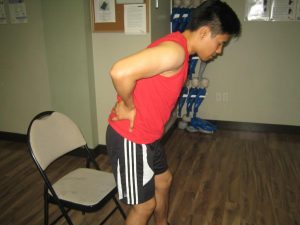Sacroiliac joint pain is defined as discomfort in a joint in the low back region, usually close to the waist. It is important to note that the sacroiliac joints are found amidst the lower backbone and the hip bones.
Some of the possible causes of sacroiliac joint pain include:
- Fall injuries
- Activities that involve bending, twisting or heavy lifting
- Poor posture
- Muscular imbalance where one leg is shorter than the other
- Slackness of the ligaments after pregnancy
Characteristics

The pain can be described as:
- Discomfort and stiffness in the hips, low back or legs
- Pain after being seated for an extended period
- Difficulty bending or twisting the lower back
- Sensation of being out of normal alignment
Management of sacroiliac joint pain
The doctor might suggest stretching, exercises or other forms of physical therapy in managing sacroiliac joint pain. Massage or other modalities are also beneficial in restoring the joint alignment.
In some cases, the doctor might administer a single shot or more of numbing medication and steroids into the joint.
Other self-care measures that can be used include:
- Application of ice on a site several times throughout the day.
- A pain medication can be taken as instructed by the doctor.
- Heat can be applied at 20 minutes at a time to relax the tight muscles.
- If the leg length varies, specialized shoes or inserts can be used.
It is vital to perform proper warm-up and stretching exercises before activities to lower the risk for injuries.
